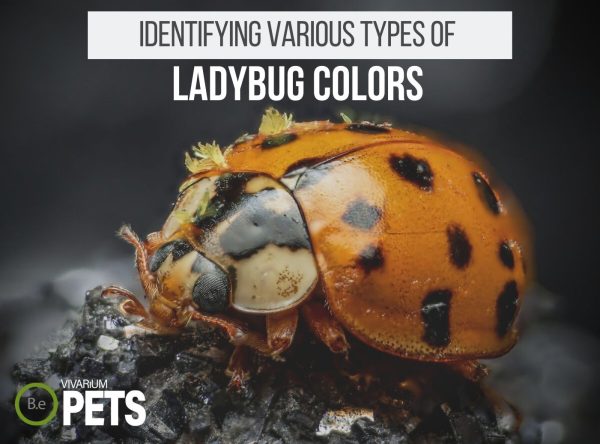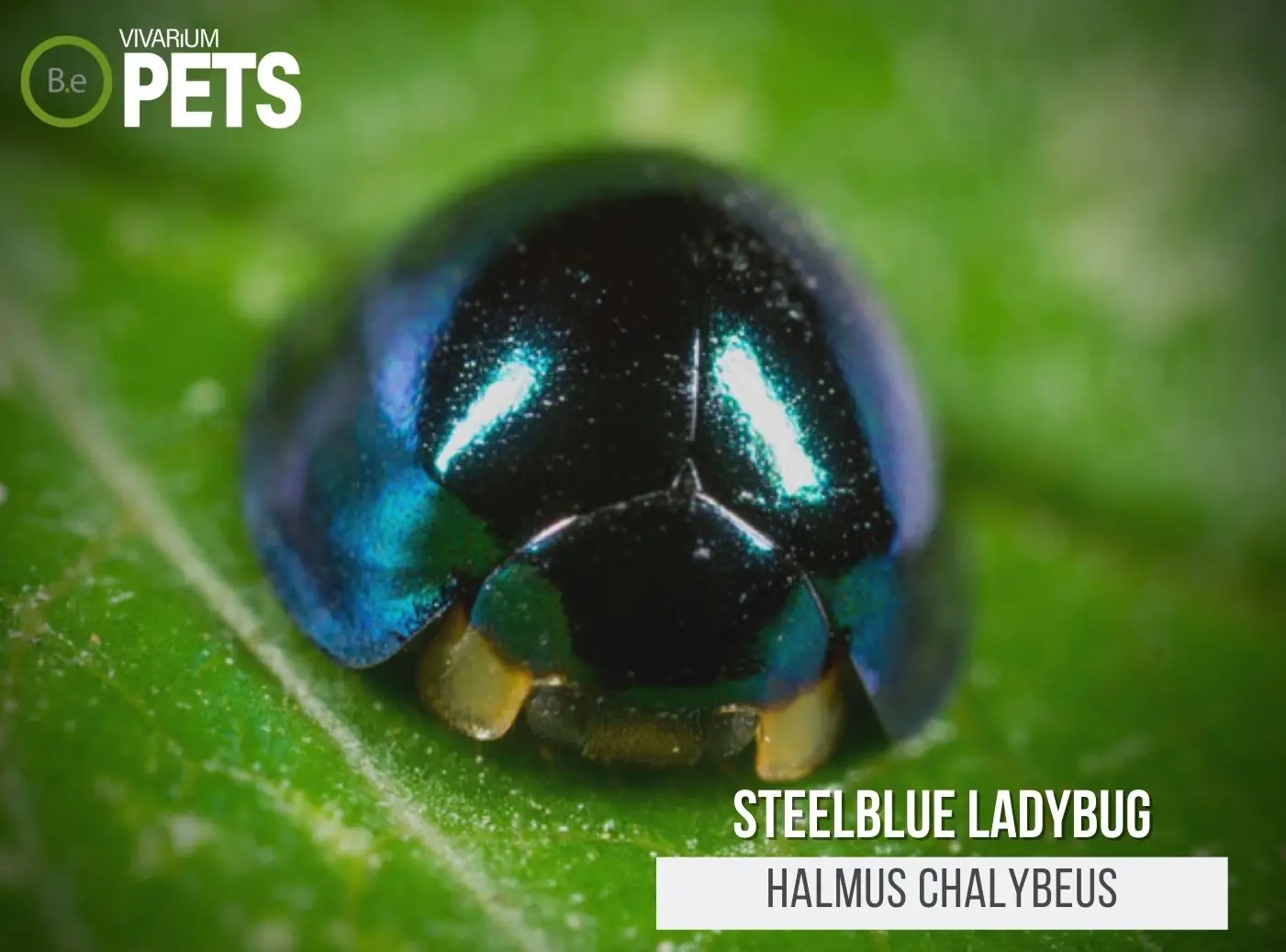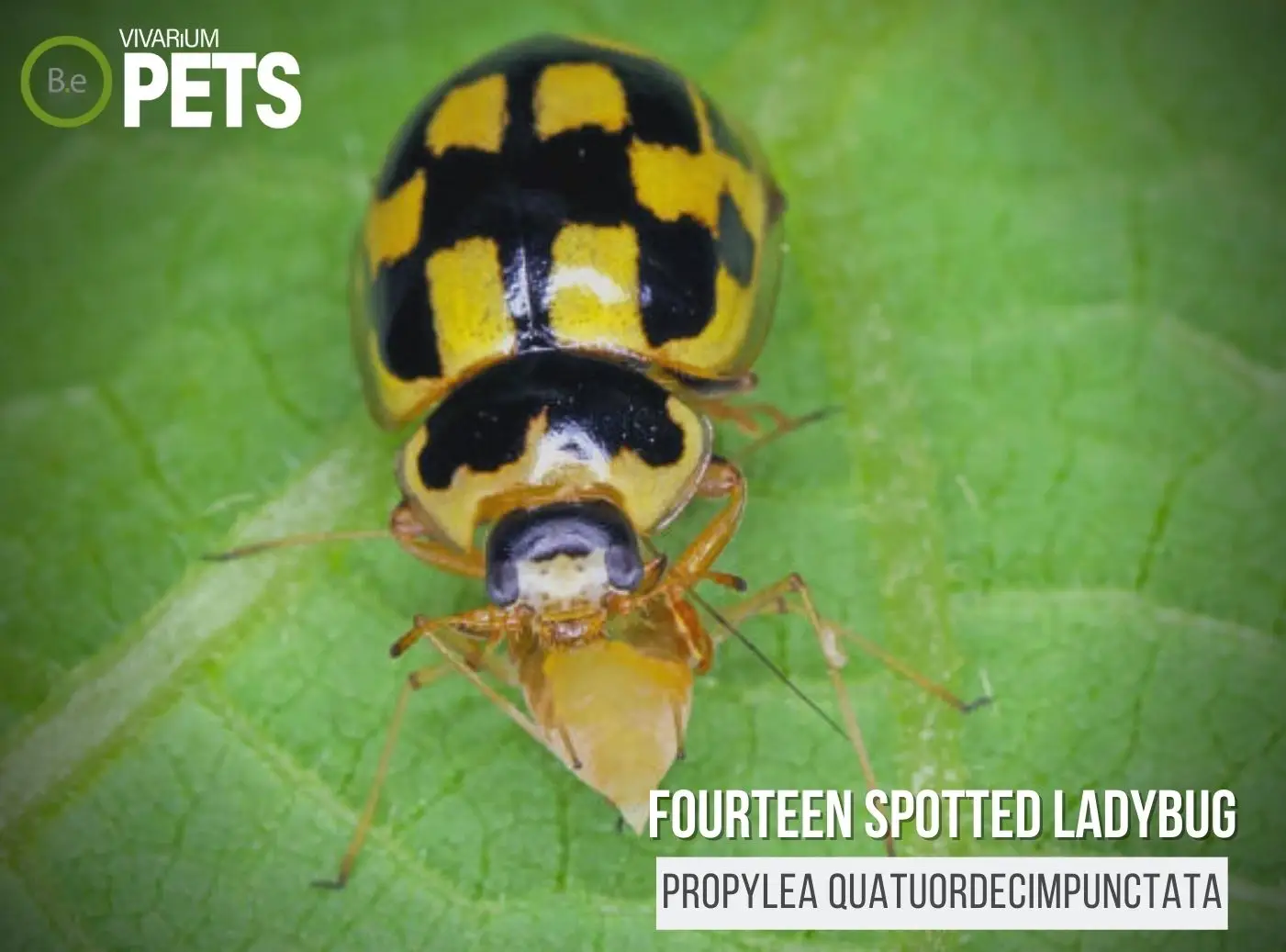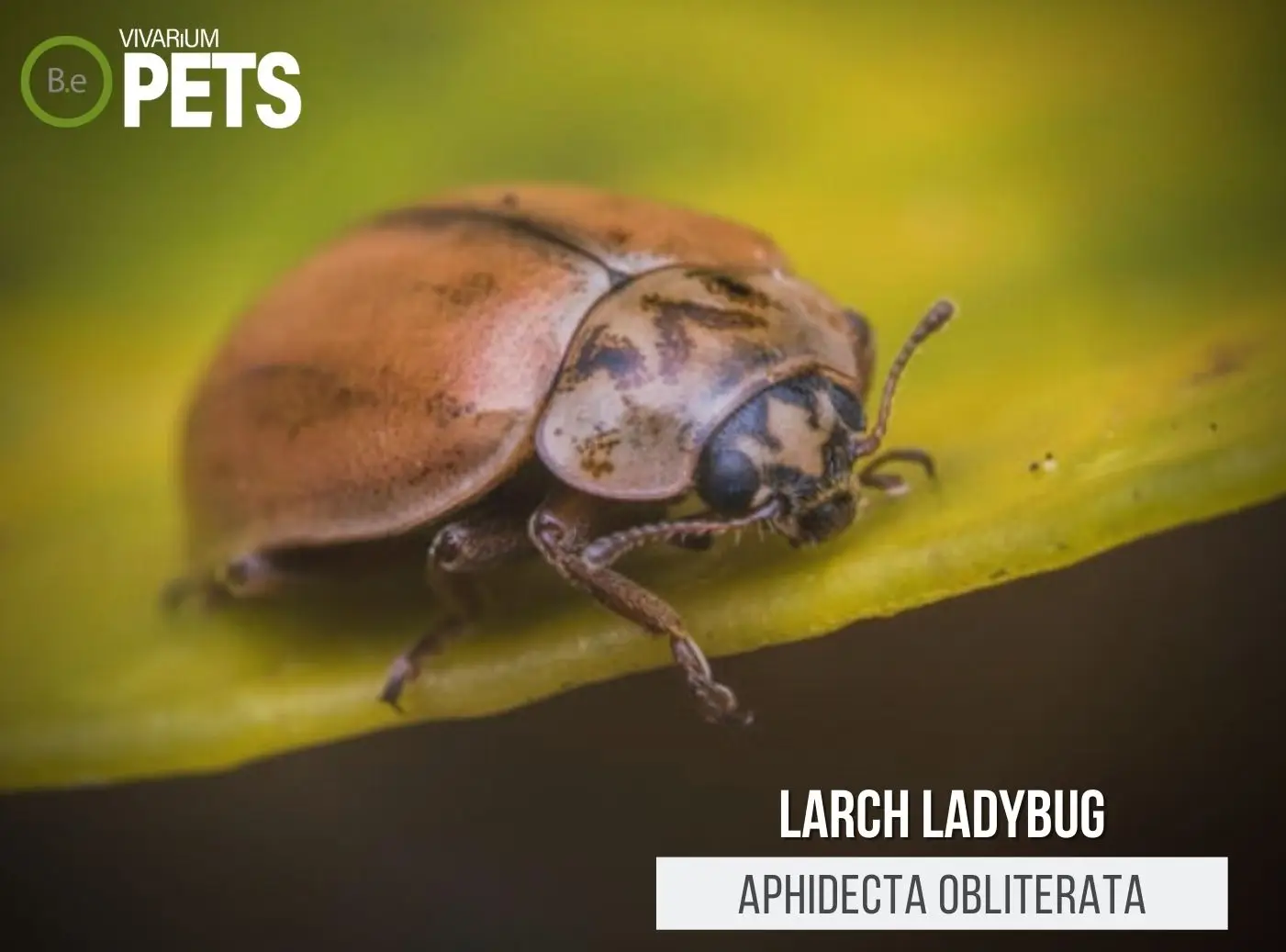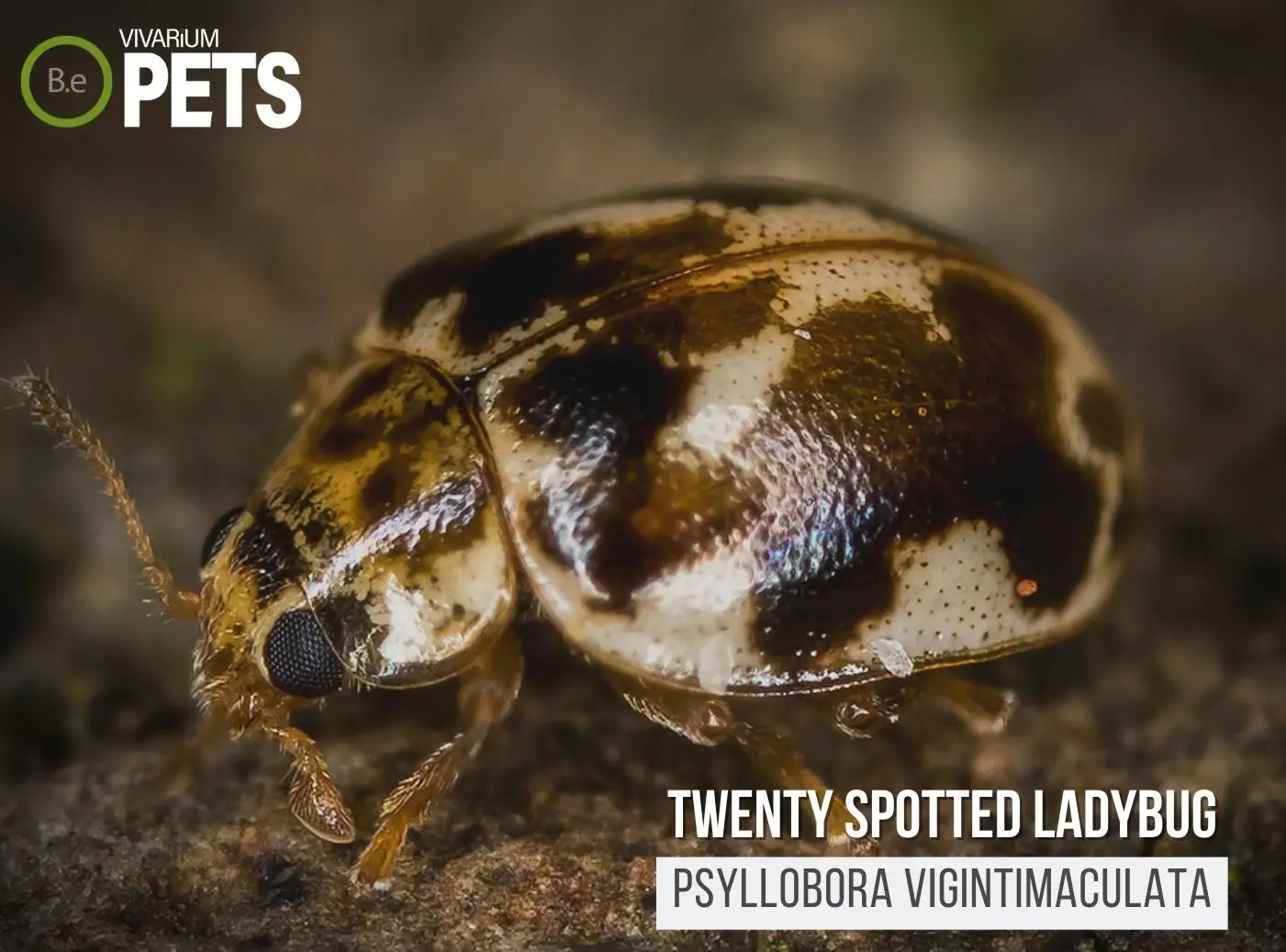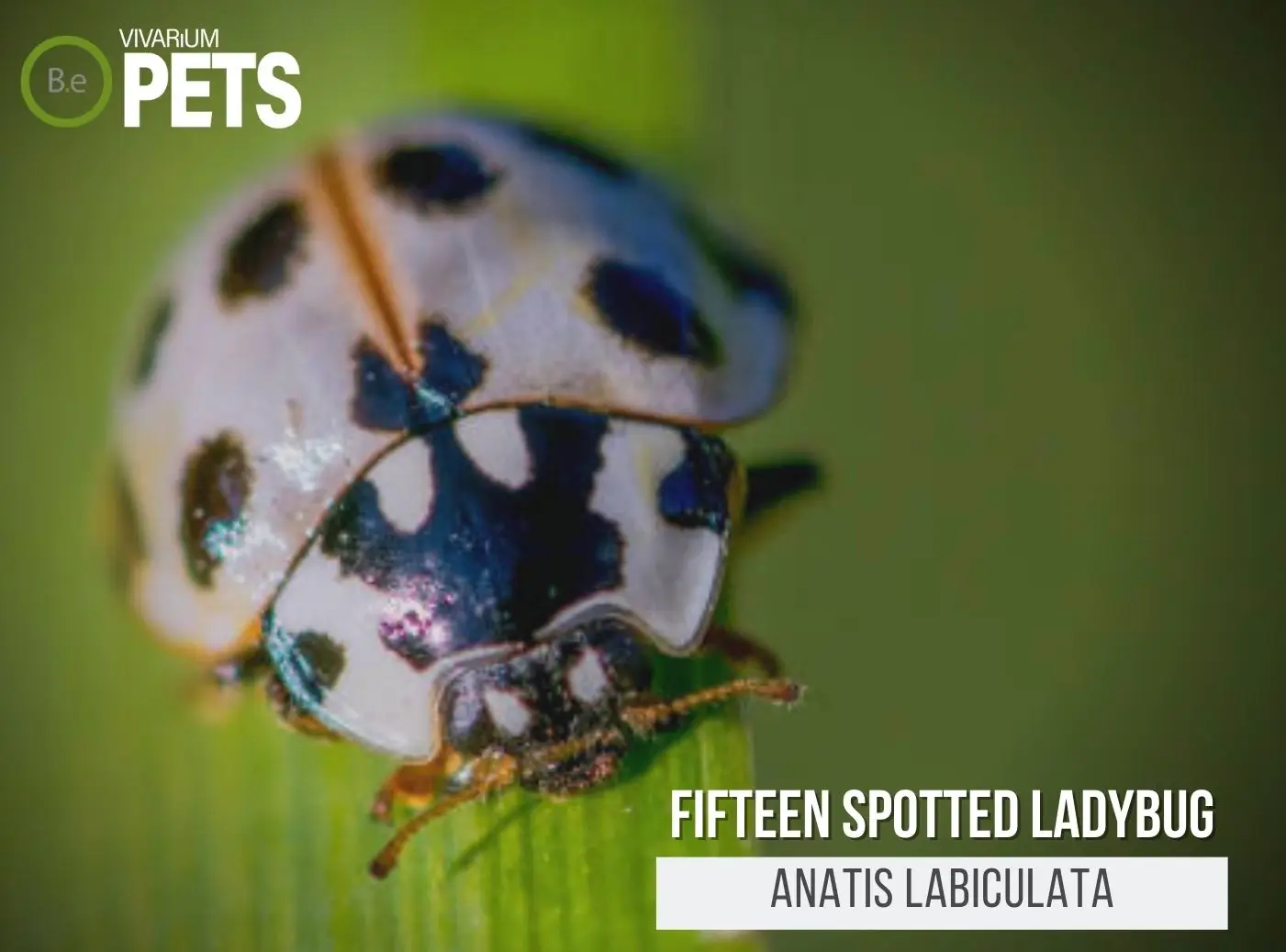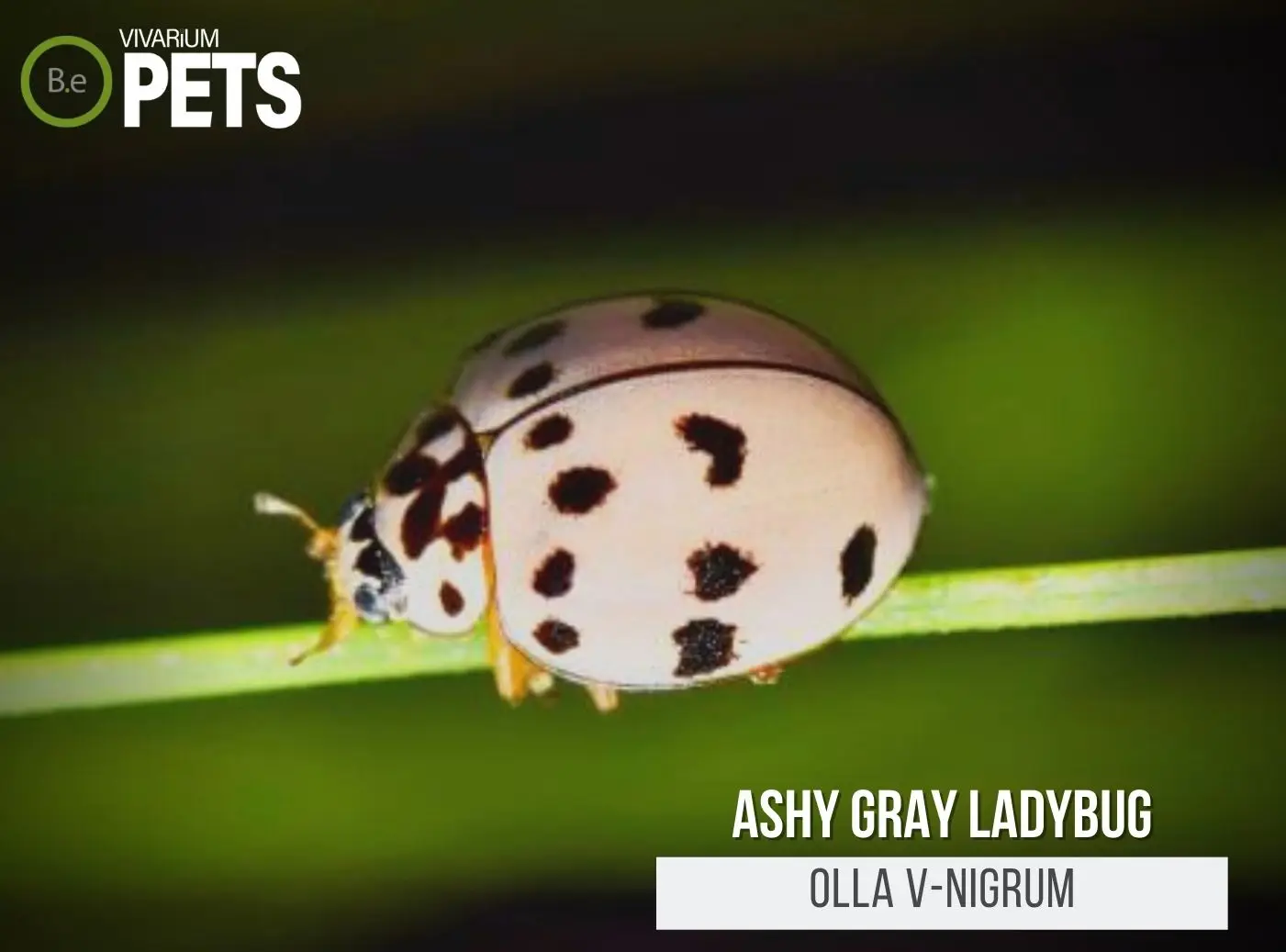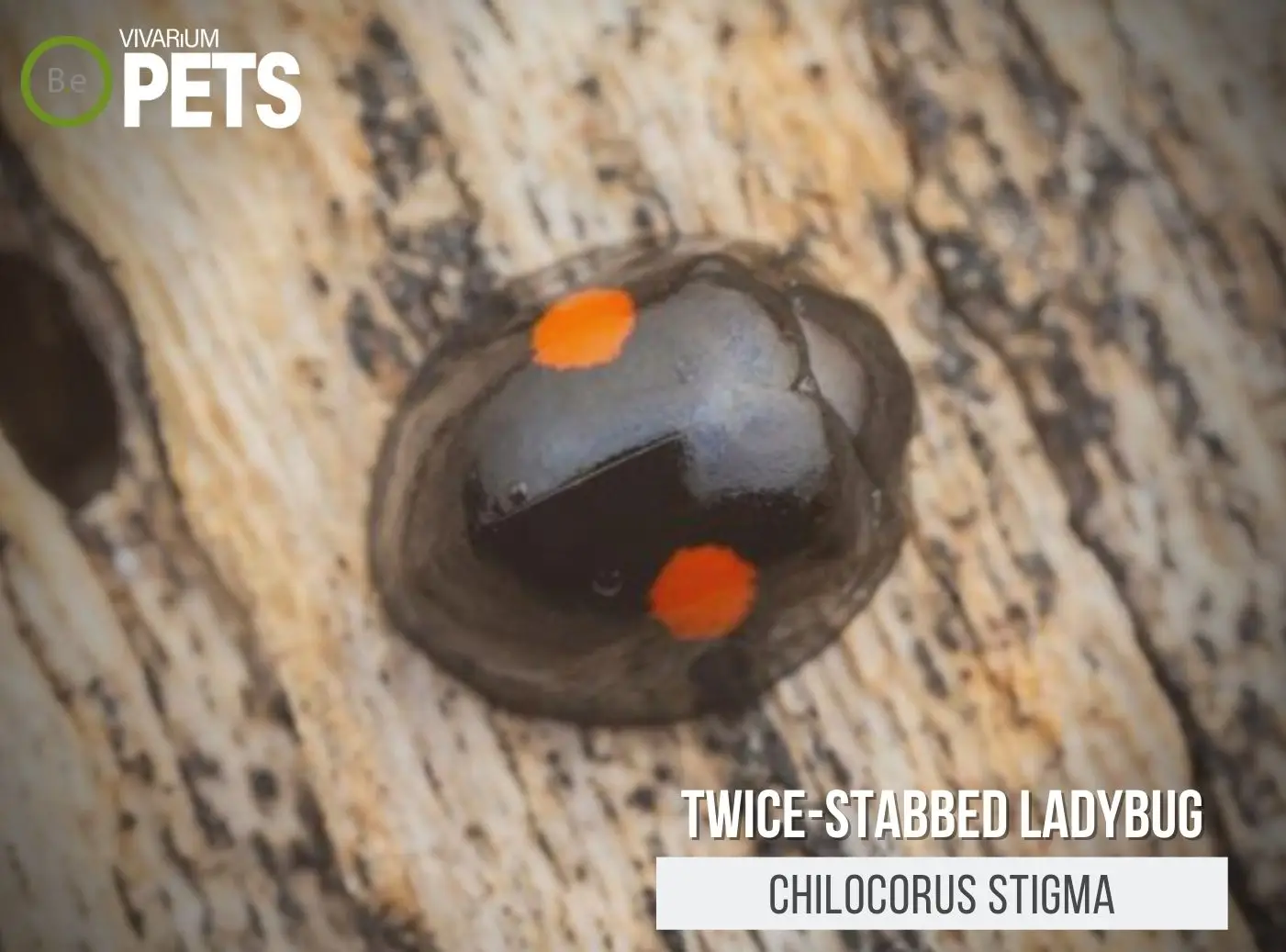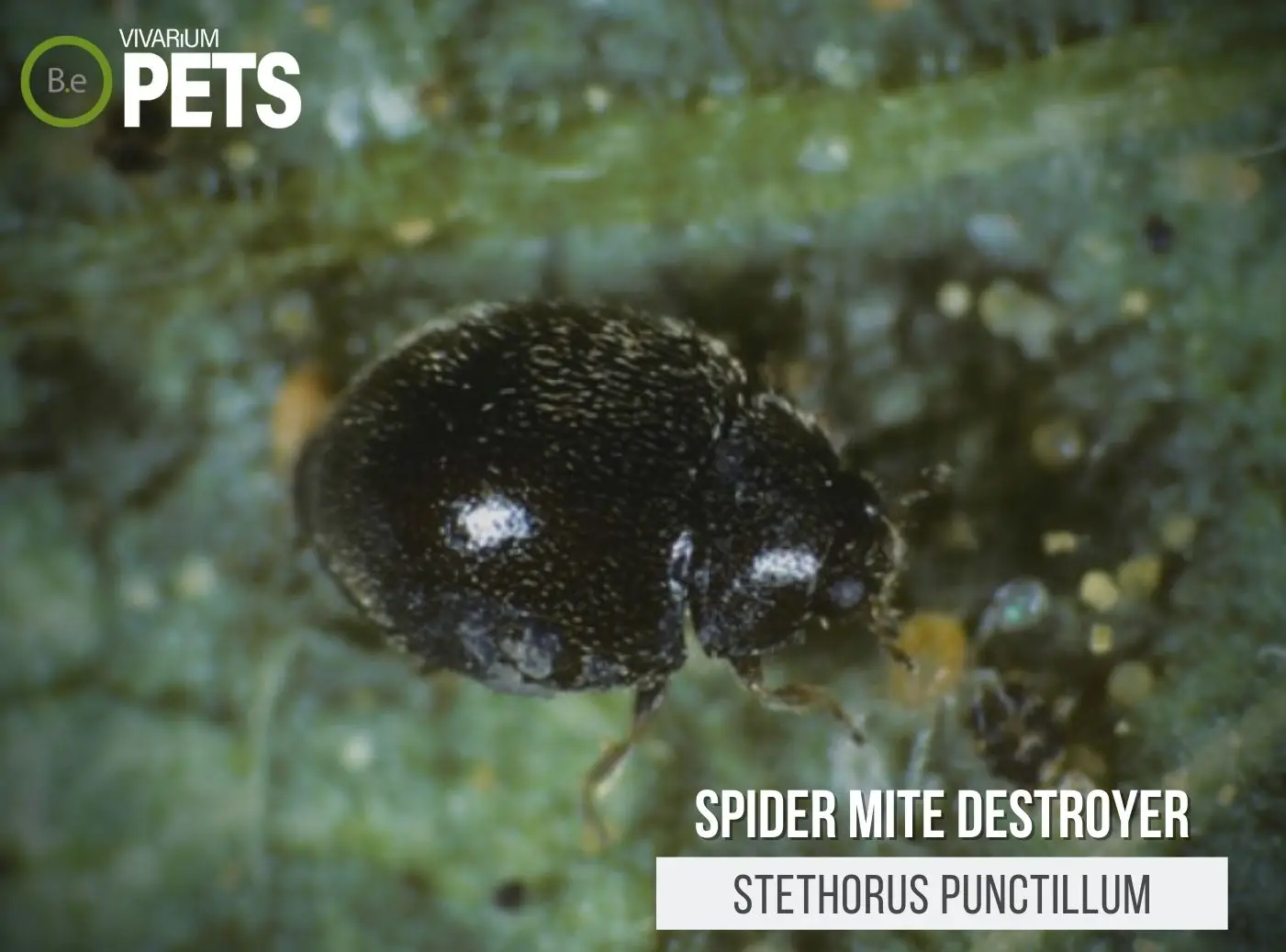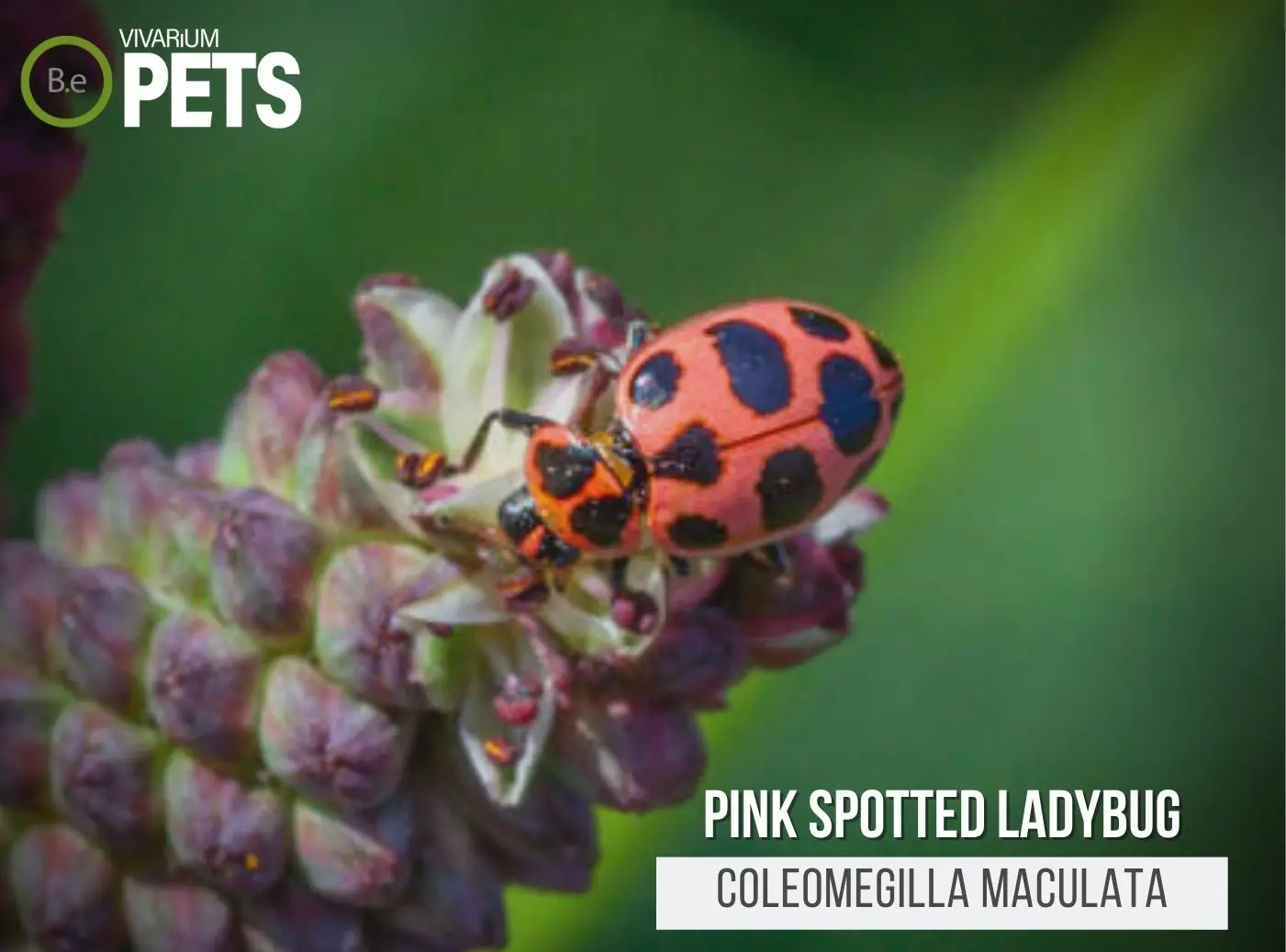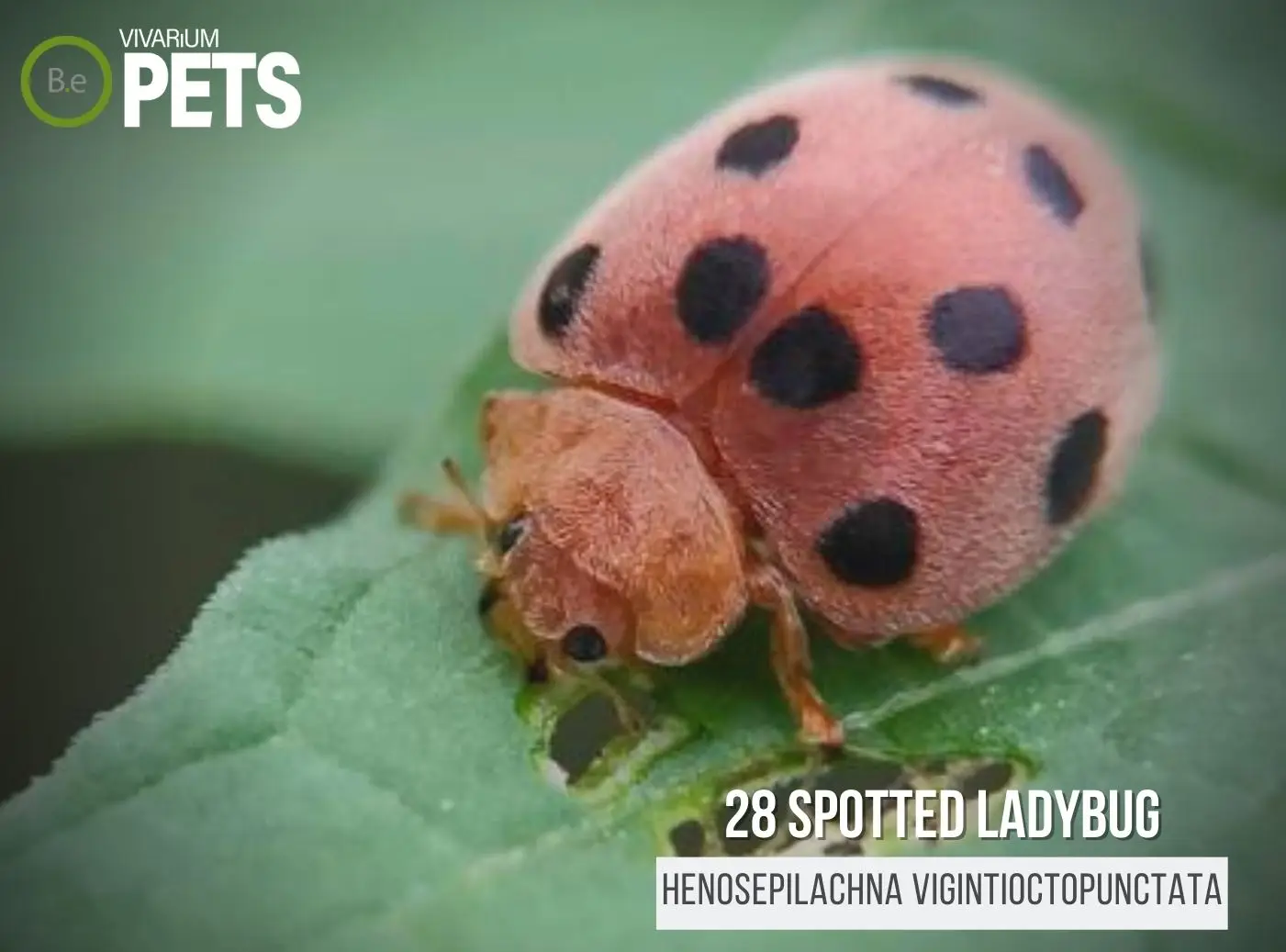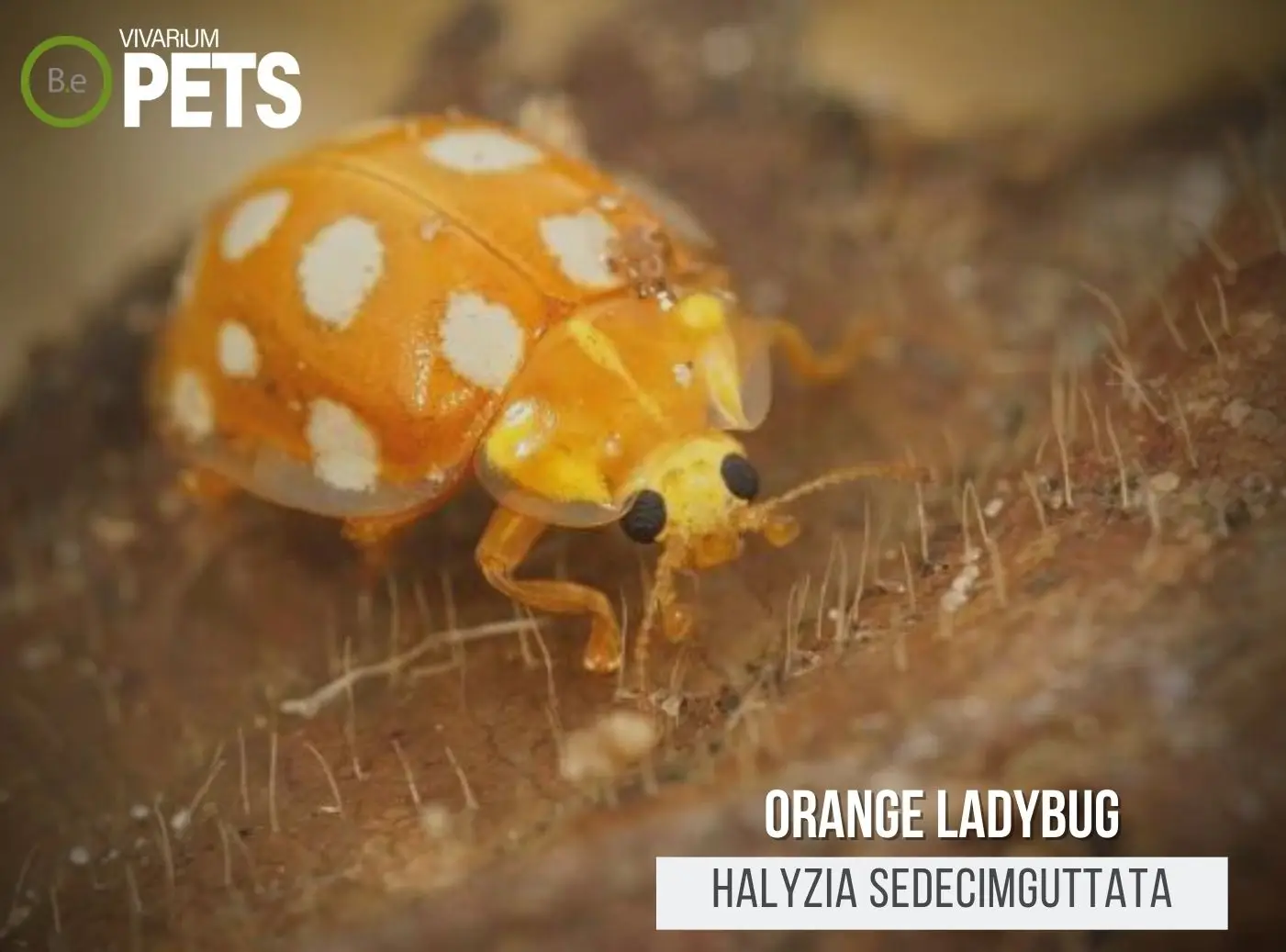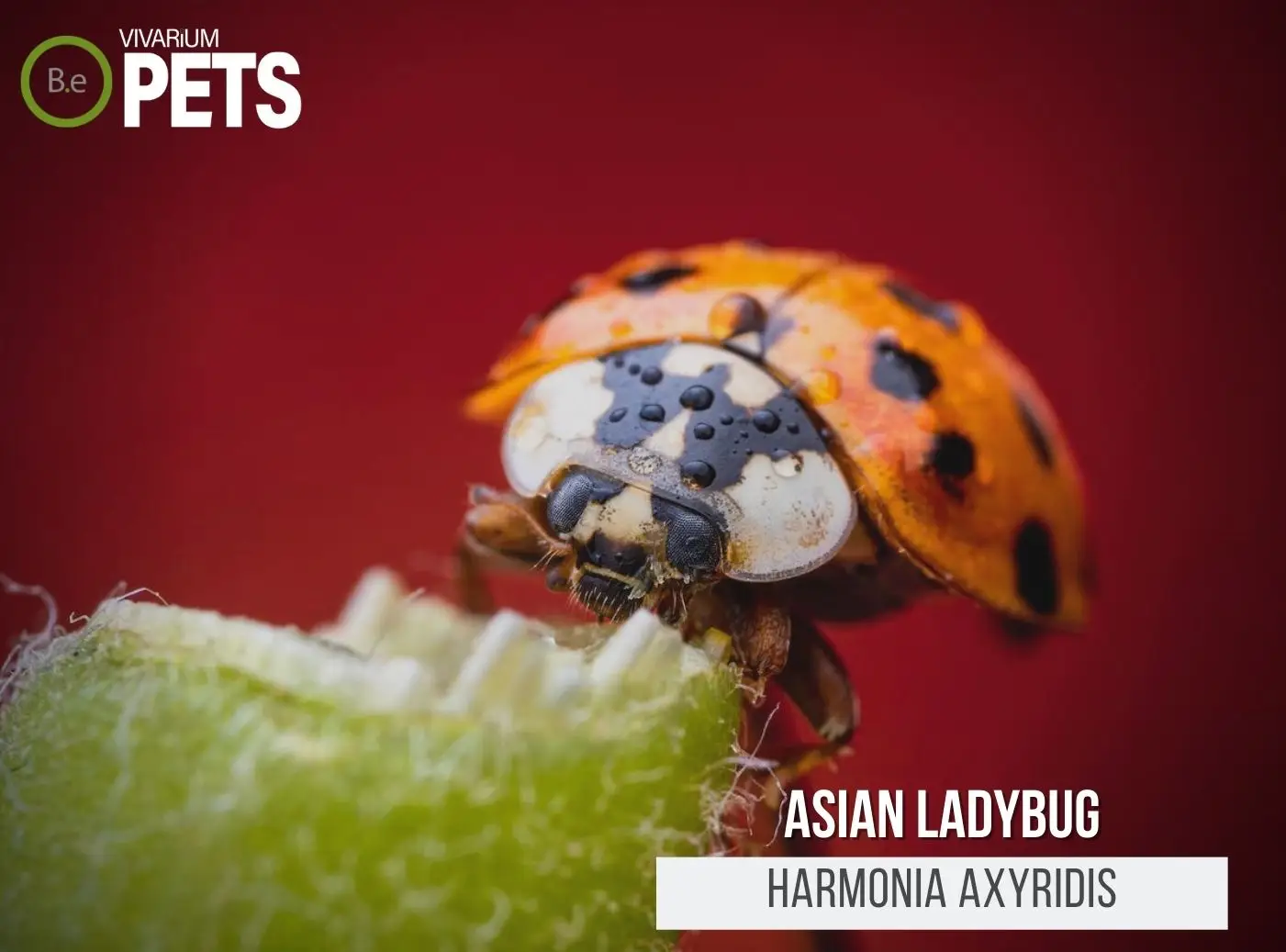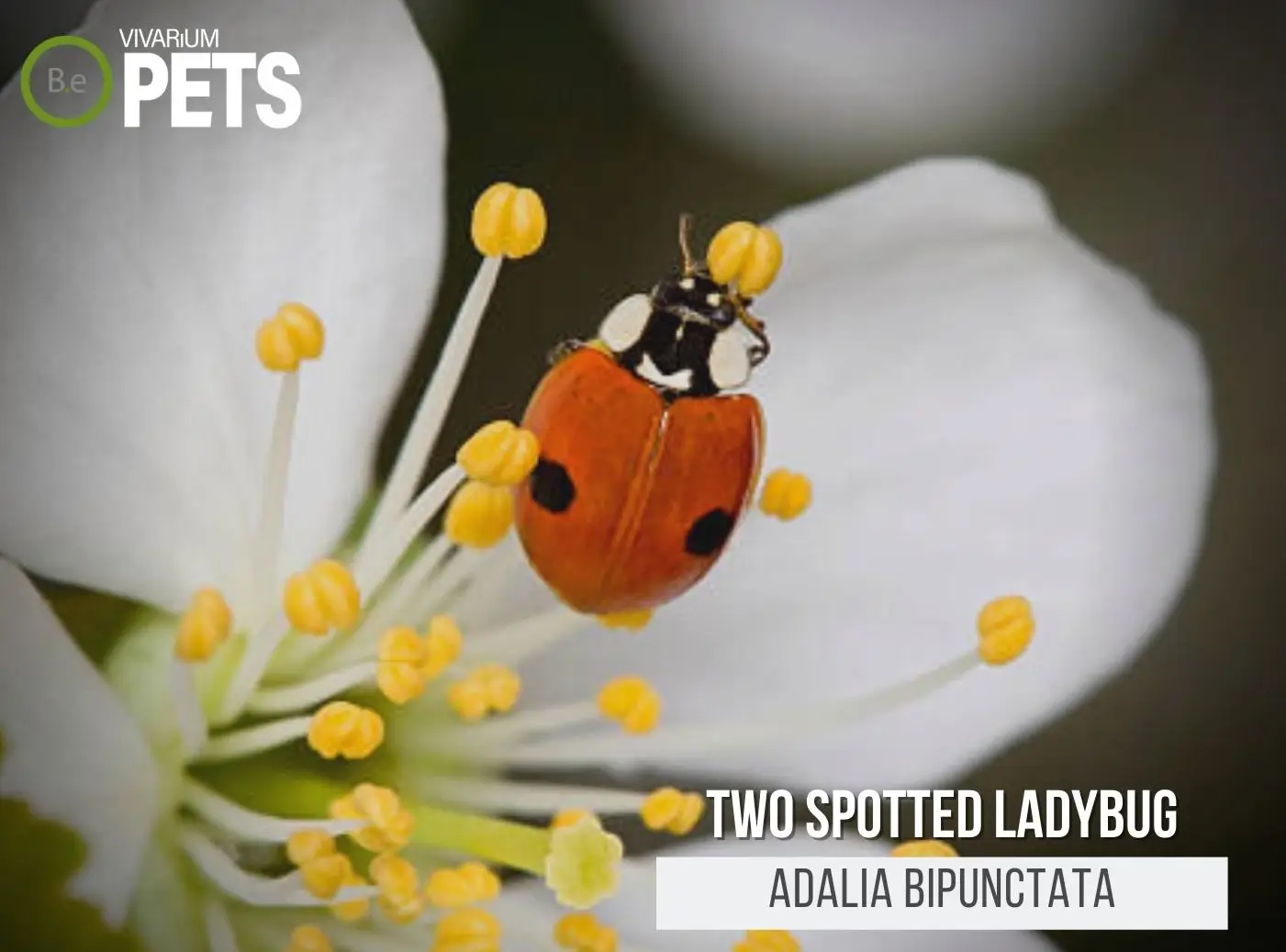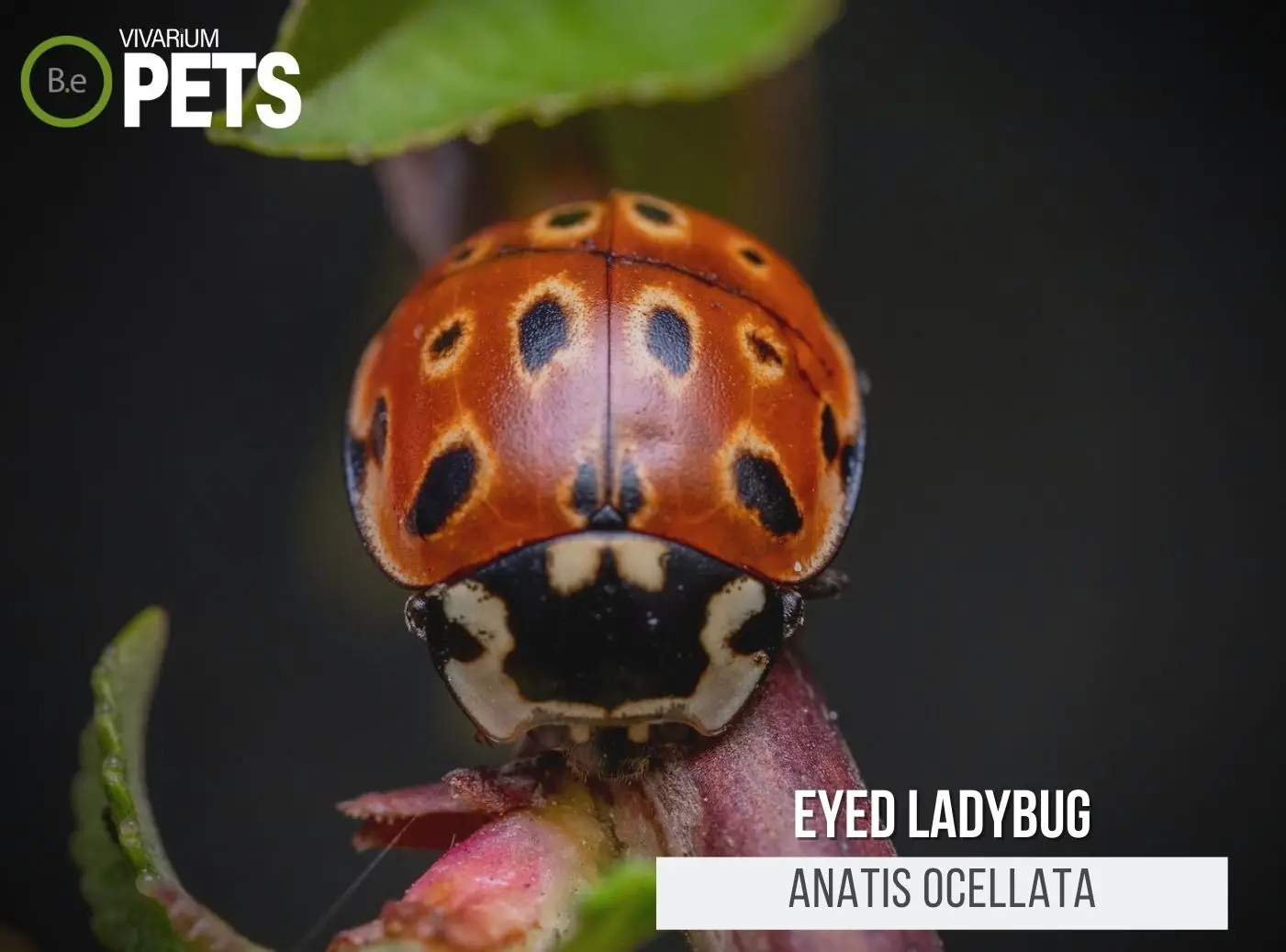What type of ladybugs do you often find near you? Depending on where you are in the world, what you describe might vary greatly from someone else.
With so many varieties of ladybugs out there, it can be difficult to narrow down the perfect small exotic pet.
From gold to pink to metallic blue, the choices are seemingly endless. In this article, we’ll explore various types of ladybugs available, sorted by color, so you can choose the ideal pet for your hobby.
We’ll also discuss the benefits of keeping a pet ladybug, how to catch one, the type of housing you should provide, and the best care tips to ensure your pet’s health and happiness.
Let’s dive right in!
Table Of Contents:
ToggleWhat Are Ladybugs?
Ladybugs belong to the Coccinellidae family of predator beetles and are classified as insects.
These colorful critters vary significantly in size and are recognizable by their large eyes, oval shape, spot patterns, and bright colors.
They are often found in gardens, fields, and even homes. Ladybugs have many different nicknames.
People commonly refer to them as ladybugs, ladybirds, or ladybeetles.
However, although they are broadly called “ladybugs,” they are beetles and not true bugs.
That’s because bugs are a different kind of insect, belonging to the Hemiptera order. Because ladybugs are beetles, they belong to the Coleoptera order.
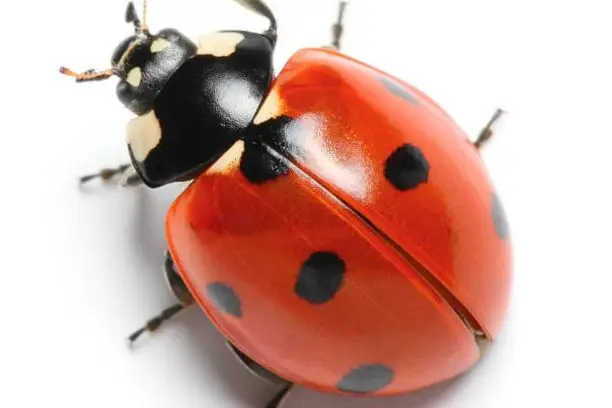

Benefits Of Ladybugs
Ladybugs are incredibly beneficial creatures that have a wide variety of uses in gardens and vivariums.
In gardens, ladybugs feed on pest insects such as aphids, mealybugs, and scale, making them an effective form of natural pest control.
In terrariums, they provide a beautiful, natural aesthetic as well as a source of food for other creatures.
Additionally, they help to maintain balance in the system by eating smaller insects and other beneficial organisms.
Furthermore, the bright colors of some varieties make them a pleasing sight and their presence can bring a sense of calm for those that keep them as pets.
Create the perfect home for your beetle with our Customizable Beetle Enclosure Kits, designed to meet all their habitat needs.
Best Types Of Ladybugs
Ladybirds come in a dazzling array of sizes and colors, making it difficult to distinguish one species from the other.
To identify the type of ladybug you‘re looking at, take into consideration their size, coloration, and pattern.
Additionally, some ladybugs have distinctive markings, such as spots, stripes, or no markings at all.
If you need additional help, consider using this list as a reference to help determine the type of lady beetle you might have amongst you.
With such an array of diverse species, it‘s important to be able to identify them correctly before trying to capture them as pets.
Here is a compiled list of ladybirds that are kept as pets all over the globe, categorized by their colors.
Blue Ladybugs
Blue ladybugs are relatively rare compared to other species. Despite their rarity, they can bring a vibrant, cool hue to any pet owner’s collection.
Capturing these varieties can provide your collection with an eye–popping addition.
Steelblue Ladybird (Halmus chalybeus)
The Steelblue Ladybird is perfect for both gardens and terrariums.
Often reaching lengths of 3-4 mm, this pet lady beetle has a distinctive steel–blue coloring with a yellow to cream-colored dorsal abdomen.
They feed on a wide variety of aphids and other nuisance insects, making them an excellent candidate for pest control in setups.
Steelblue ladybugs are relatively easy to care for, though they should be kept in a secure enclosure and be provided with plenty of food to scavenge for.
If you want more specifics on this pet ladybug, here’s a complete care guide on Steelblue Ladybird (Halmus chalybeus).
Yellow Ladybugs
Yellow ladybugs can be found throughout the world. These small insects are predictably yellow with black or brown spots or lines.
While yellow ladybugs can make great pets, they can be a bit skittish when it comes to dealing with them.
Therefore, it‘s vital to always wear gloves when preparing to catch one and to be gentle and patient when handling them.
22-Spot Ladybird (Psyllobora vigintiduopunctata)
The 22–Spot Ladybird is an ideal choice for those who are looking for a yellow lady beetle for combating pests or general keeping.
These vibrant amber beetles, typically measuring a few millimeters in length, prove to be quite the addition!
22–Spot Ladybirds are often beneficial to gardens, as their presence helps to keep the pest populations at bay.
They love to move around, so providing them with some soil or bark substrate is key.
As long as the terrarium is kept warm and humid, and with a feeder of insects or fruit, these small yet mighty yellow beetles could be your next pet!
If you want more specifics on this pet ladybug, here’s a complete care guide on the 22-Spot Ladybird (Psyllobora vigintiduopunctata).
Fourteen-spotted Ladybug (Propylea quatuordecimpunctata)
The Fourteen–Spotted Ladybug is a beautiful and unique checkered lady beetle, with vibrant colors ranging from yellow to orange.
These tiny beetles reach lengths of only 3-5 millimeters and feature fourteen evenly spaced black spots across their backs.
They prefer dry and semi-arid environments and can be found in gardens, meadows, and cultivated fields.
Fourteen-spotted Ladybugs are great for controlling pest populations and eating aphids, scale, and mealybugs.
When kept in terrariums, they make for a fascinating and rewarding pet experience, as they are often seen chasing their prey during feeding.
With proper enclosure conditions and temperature control, the Fourteen-Spotted Ladybug can make a great pet for anyone looking to admire a different kind of insect.
If you want more specifics on this pet ladybug, here’s a complete care guide on the Fourteen-spotted Ladybug (Propylea quatuordecimpunctata).
Striped Ladybug (Paranaemia vittigera)
The Striped Ladybug, scientifically known as Paranaemia vittigera, is a species of yellow ladybeetle that delights in being kept as a pet.
These vivid yellow insects, only reaching lengths of 4-6 cm, are distinguished by their black stripes that form a unique pattern depending on the region from which the specimen is found.
As predators in the wild, they are known to feast upon smaller insects such as aphids and mites.
With proper care and nutrition, these enigmatic creatures offer a delightful observation in pet terrariums, making them a great addition to any insect collection.
If you want more specifics on this pet ladybug, here’s a complete care guide on Striped Ladybug (Paranaemia vittigera).
Brown, Tan, & Creme Ladybugs
Brown, tan, and creme-colored ladybeetles are among the second most common varieties of Coccinellidae in the world and they make suitable, interesting pets.
Tan and creme-colored ladybugs are particularly attractive and make good companions for those who want a calm, relatively inactive pet.
They are also relatively easy to catch due to their size and more sedentary nature.
These earth-tone ladybugs come in a variety of sizes and are typically marked with the same dark spots that other ladybugs have.
In addition to these varieties, creme-colored ladybugs are also fairly common and can be identified by their more mottled appearance.
Larch Ladybird (Aphidecta obliterata)
The Larch Ladybird is a striking and unique-looking type of ladybug, making them an ideal pet for any enthusiast.
This species of ladybug has a distinctive yellow-orange and black mottled pattern, often with a glossy appearance.
When threatened, these ladybugs can secrete a noxious yellowish-orange fluid to ward away predators.
The larvae of Larch Ladybirds are renowned for their powerful appetite for garden pests, making them an invaluable addition to any garden.
If you want more specifics on this pet ladybug, here’s a complete care guide on Larch Ladybird (Aphidecta obliterata).
Twenty-spotted Lady Beetle (Psyllobora vigintimaculata)
The Twenty-spotted Lady Beetle, also known as Psyllobora vigintimaculata, is the perfect choice of ladybug for any natural pet collection.
These ladybugs feature twenty distinctive black spots on their exoskeletons, ranging from light brown to black with brownish undertones.
Aside from their unmistakable markings, these ladybugs are known to benefit your garden, eating pests such as moths, whiteflies, and aphids.
If you want more specifics on this pet ladybug, here’s a complete care guide on the Twenty-spotted Lady Beetle (Psyllobora vigintimaculata).
Fifteen-spotted Lady Beetle (Anatis labiculata)
The Fifteen-spotted Lady Beetle, also known as the Anatis labiculata, is one of the most exotic types of ladybugs that can be kept as a pet.
These vibrant beetles, which usually range from 5-10mm in length, are highly recognizable thanks to their unique design, which features a creme-colored shell riddled with 15 black spots.
Because they reside in many parts of the world, they are easy to find and catch, and the flat shape of their bodies does well in a variety of terrariums.
These beetles are also known for eating aphids and other plant-annoying pests, which makes them ideal companions for gardens and greenhouses.
With careful oversight and a healthy diet, the Fifteen-spotted Lady Beetle can make an incredible pet for any hobby enthusiast.
If you want more specifics on this pet ladybug, here’s a complete care guide on the Fifteen-spotted Lady Beetle (Anatis labiculata).
Ashy Gray Lady Beetle (Olla v-nigrum)
The Ashy Gray Lady Beetle is a remarkable pet ladybug that offers a unique experience for any insect fanatic.
These strikingly colored insects have a dark gray background that is contrasted by various white markings, creating a distinctive pattern that’s both beautiful and eye-catching.
They are also great pest controllers, as they are voracious predators of many common garden pests.
With proper care and a suitable environment that meets their needs, these captivating beetles will bring endless enjoyment to those fortunate enough to keep them as pets.
If you want more specifics on this pet ladybug, here’s a complete care guide on Ashy Gray Lady Beetle (Olla v-nigrum).
Black Ladybugs
Black ladybugs are a unique variety of the species. They are often found around flowers and plants in their natural environment and come in various shapes and sizes.
The most common shape for a black ladybug is a round, circular shape that is shiny black.
While these are more common, there are also rare varieties of black ladybugs that have furry exoskeletons and irregularly shaped bodies with spotted markings.
Twice-stabbed Ladybug (Chilocorus stigma)
The Twice–stabbed Ladybug is a type of black ladybug that makes for a captivating pet for terrariums.
These small ladybugs, typically measuring only 5 mm, are distinguished by their characteristic red markings on their black exoskeleton that resemble two stab wounds.
They are impressively resilient insects, seeking out and consuming other insects to survive with their strong mandibles and legs.
Pet owners appreciate them for their voracious appetite and natural pest control, but they must be given enough food to survive and remain healthy.
The Twice-stabbed Ladybug is a unique and enjoyable pet for any setup, offering resilience and natural pest control.
If you want more specifics on this pet ladybug, here’s a complete care guide on Twice-stabbed Ladybugs (Chilocorus stigma).
Pine Ladybird (Exochomus quadripustulatus)
The Pine Ladybird is an incredible type of black ladybug to look for and keep as a pet.
Their mottled black-and-red coloring makes them quite striking in appearance and they often reach lengths of up to 4mm.
Due to its hardy characteristics, this species is suitable for beginner hobbyists and will enjoy living in a warm climate with plenty of food and water.
If you want more specifics on this pet ladybug, here’s a complete care guide on Pine Ladybird (Exochomus quadripustulatus).
Heather Ladybird (Chilocorus bipustulatus)
The Heather Ladybird, or Chilocorus bipustulatus, is a type of black ladybug that is often employed in pest control.
With its distinct black color and red markings, this insect can be a great addition to terrariums as well as gardens.
In the wild, these species are commonly found living in heathers or dunes.
Their small size and round shape allow them to easily hide amongst plant life to escape predators, although, when threatened, they may excrete a foul-smelling liquid.
With proper care and suitable habitat, these loyal little critters can provide a sense of interest and curiosity to your terrarium.
If you want more specifics on this pet ladybug, here’s a complete care guide on Heather Ladybird (Chilocorus bipustulatus).
Mealybug Destroyer (Cryptolaemus montrouzieri)
The Mealybug Destroyer is an ideal choice when it comes to black ladybugs as pets.
These black ladybugs are small and oval-shaped and typically reach lengths of 3-4mm in size.
Mealybug Destroyers are an effective form of biological pest control, as they feed on an array of pests such as mealybugs, scales, and aphids which may be found in a terrarium.
Featuring amazing camouflage abilities and an incredible life cycle, these wonderful little black ladybugs are a great addition to any emerging pet keeper’s terrarium.
With proper care and feeding, the Mealybug Destroyer will provide hours of enjoyment as it works to maintain a healthy and thriving terrarium environment.
If you want more specifics on this pet ladybug, here’s a complete care guide on Mealybug Destroyer (Cryptolaemus montrouzieri).
Spider Mite Destroyer (Stethorus punctillum)
The Spider Mite Destroyer, or Stethorus punctillum, is a popular black ladybug perfect for terrariums and gardens alike.
These particular members of the ladybug family stand out for their unique coloring;
They have black bodies with light yellow accents on their eyes, antennae, and wing covers.
The Spider Mite Destroyer is a beneficial insect because they feed on a range of pests, including spider mites and corn earworms.
With proper care, such as a warm and sunny environment, these impressive black ladybugs will bring plenty of benefits to your home, making them an ideal pet for hobbyists and gardeners alike.
If you want more specifics on this pet ladybug, here’s a complete care guide on Spider Mite Destroyer (Stethorus punctillum).
Whitefly Predator (Delphastus catalinae)
The Whitefly Predator is an excellent pet for vivariums, and the black color makes it stand out in comparison to other species.
These ladybugs can reach lengths of around 1.3-1.4 mm and are an excellent form of living pest control.
Known for being a beneficial bug, they will happily eat whiteflies, aphids, mealybugs, and other pests that inhabit gardens and terrariums.
With proper care and a proper living environment, these beautiful black ladybugs will provide both pleasing aesthetics and pest control to terrariums for years to come!
If you want more specifics on this pet ladybug, here’s a complete care guide on Whitefly Predator (Delphastus catalinae).
Pink Ladybugs
Pink ladybugs are a unique variety of ladybugs that are found in a variety of colors ranging from pale pink to deep, rich ruby.
These eye–catching bugs are perfect additions to a pet collection.
They feed on plant–destroying aphids, making them a great option for gardeners and terrarium enthusiasts.
Furthermore, pink ladybirds are easy to catch and have gentle temperaments, making them suitable for novice pet owners.
With proper care and commitment, these pretty and practical insects can be a great addition to any home.
Pink Spotted Lady Beetle (Coleomegilla maculata)
The Pink Spotted Lady Beetle, also known as Coleomegilla maculata, is a stunning pink ladybug that makes an excellent pet.
In the wild, they are often found on vegetation munching on aphids and other destructive pests.
As a pet, they are not only fascinating to observe but can be a great help in controlling pests in your yard.
These ladybugs feature a distinct pink and cream-colored exoskeleton with black markings and can live up to a year or more in the perfect environment.
If you want more specifics on this pet ladybug, here’s a complete care guide on Pink Spotted Lady Beetle (Coleomegilla maculata).
Hadda Beetle (Henosepilachna vigintioctopunctata)
The Hadda Beetle is a unique example of the colorful variety of ladybugs that you can find in the wild.
These small, fuzzy ladybugs feature twenty-eight black spots on their backs, hence the name Henosepilachna vigintioctopunctata which means ‘twenty-eight-spotted’.
They are considered beneficial to gardeners, feeding on plant pests such as aphids and mites.
They also have impressive flight speed and often make fascinating displays of their aerial capabilities when their environment is disturbed.
If you want more specifics on this pet ladybug, here’s a complete care guide on Hadda Beetle (Henosepilachna vigintioctopunctata).
Orange Ladybugs
Orange ladybugs are popular among hobbyists and pet keepers.
Not only are they attractive and vibrant to look at, but they’re also beneficial natural pest-killers in emergencies.
Orange lady beetles are known for their hardy nature and offer a range of fascinating behaviors to watch as they feed and breed.
They’re also capable of interbreeding with other ladybug species, potentially giving you a unique and interesting mix of offspring.
Orange Ladybug (Halyzia sedecimguttata)
The Orange Ladybug, otherwise known as Halyzia sedecimguttata, is an excellent choice for those looking for a pet ladybug.
Their vibrant orange bodies can grow up to 6mm in length, and they have several black spots across their backs.
In the wild, these ladybugs can be found in gardens and meadows across Europe and Asia.
In captivity, they will require plenty of food and a warm, humid environment to thrive.
Orange Ladybugs are beautiful and gentle, making them ideal pets for both newer and experienced hobbyists alike.
Furthermore, they will happily hunt any pests that may wander through their enclosure, making them an asset to any terrarium.
If you want more specifics on this pet ladybug, here’s a complete care guide on the Orange Ladybug (Halyzia sedecimguttata).
Asian Lady Beetle (Harmonia axyridis)
The Asian Lady Beetle is a popular pet for all types of terrariums!
This vibrant orange ladybug, generally measuring between 5 to 6mm in length, is sure to bring vibrance to your enclosure.
With a domed shape and a characteristic black mark in the center of their pronotum, these ladybugs can be instantly recognized.
Commonly found in orchards, gardens, and meadows, Asian Lady Beetles are a fun and entertaining species to watch.
They tend to take long flights, too, making them a great challenge to capture for your collection.
With some patience and luck, you can enjoy watching these types of orange ladybugs in your setup for years!
If you want more specifics on this pet ladybug, here’s a complete care guide on Asian Lady Beetle (Harmonia axyridis).
Large Spotted Ladybird (Harmonia conformis)
The Large Spotted Ladybird, also known as Harmonia conformis, is a popular species of orange ladybug that makes for a great pet.
With its adorable spotted shell, the Large Spotted Ladybird can grow up to 7mm in size and will provide hours of entertainment in a tank.
Not only is it beautiful to look at, but it’s also extremely beneficial for gardens as it is a predator of pest insects.
If you want more specifics on this pet ladybug, here’s a complete care guide on Large Spotted Ladybird (Harmonia conformis).
Convergent Lady Beetle (Hippodamia convergens)
Convergent Lady Beetle, commonly known as the orange ladybug, is an extremely popular pet for outdoor setups due to their vibrant coloring.
These ladybugs range from 4 to 7mm in length and are easily recognizable for their dark orange elytra, or ‘hard wing covers,’ that feature white-tipped black margins and distinct black spots on their pronotum.
They are also a great pet choice for gardeners, as these ladybugs can help control infestations and provide natural pest control.
If you want more specifics on this pet ladybug, here’s a complete care guide on Convergent Lady Beetle (Hippodamia convergens).
Nine-spotted Ladybug (Coccinella novemnotata)
The Nine-spotted Ladybug is a vibrant and hardy species of orange ladybug that is popular to keep as a pet.
These creatures are typically around 4.7 to 7 mm in length, boasting equally beautiful black spots along the sides of their bodies.
Not only are these ladybugs popular among enthusiasts, but they also have a significant role in pest control, as they feast on commonly unwanted garden nuisances.
With appropriate care and a suitable living environment, these creatures can offer a great pet companion and pest management solution for many years to come.
If you want more specifics on this pet ladybug, here’s a complete care guide on the Nine-spotted Ladybug (Coccinella novemnotata).
California Ladybug (Coccinella californica)
The California Ladybug is a stunning type of orange ladybug that can make an excellent pet for terrariums.
These vibrant and colorful ladybugs are approximately 5-8mm in length and are native to the region of California.
They are typically characterized by their distinctive black and orange spotted pattern that envelops their exoskeleton.
Renowned for their fruity smell and impressive flying speed, these ladybugs require relatively less maintenance than other pets and can be a great source of joy for your household.
If you want more specifics on this pet ladybug, here’s a complete care guide on California Ladybug (Coccinella californica).
True Red Ladybugs
Red ladybugs are one of the most popular pet options thanks to their bright color and spot pattern.
They can range from deep cranberry red to a lighter brick color, and many people find these creatures quite beautiful.
Red ladybirds are also known to be relatively easy to care for and are most commonly found in gardens.
They feed off insects and can help keep your garden free of pests. With proper care, these bright and friendly creatures can make great pets!
Two-spot Ladybug (Adalia bipunctata)
The Two-spot Ladybug is a beautiful type of red ladybug that makes a charming pet.
These omnivorous beetles, which reach up to 4-5mm in length, have distinctive red bodies covered with two spots and black edges.
Not only do they make a lovely pet bug, but they also provide natural pest control, eating garden pests.
Plus, their hardiness makes them ideal for beginner bug keepers.
If you want more specifics on this pet ladybug, here’s a complete care guide on the Two-spot Ladybug (Adalia bipunctata).
Seven-spot Ladybug (Coccinella septempunctata)
The Seven-spot Ladybug is an amazing pet for anyone looking for a unique red ladybug experience.
These charismatic bugs have prominent blackheads and red bodies that contrast nicely against the seven spots on their back.
They also have thin antennae that can be used to pick up scents or detect movement from far away.
They make for great pets as they are incredibly low-maintenance and require only minimal care and feeding.
They also aid in the removal of garden pests, making it a great plus for anyone looking for a pet that serves a purpose.
If you want more specifics on this pet ladybug, here’s a complete care guide on Seven-spot Ladybug (Coccinella septempunctata).
Eyed Ladybird (Anatis ocellata)
The Eyed Ladybird is the perfect type of red ladybug to have in your pet collection.
These captivating ladybugs, commonly found in Europe, sport an unmistakably eye-like marking surrounded by black spots, giving them an almost majestic look.
The aptly named species are notorious hunters, known to be able to take on even very large spiders.
Because of its rhythmic flight pattern and bright colors, it is also a sight to behold.
If you want more specifics on this pet ladybug, here’s a complete care guide on Eyed Ladybird (Anatis ocellata).
Vedalia Beetle (Rodolia cardinalis)
The Vedalia Beetle, or Cardinal Ladybird, is a type of red ladybug that makes a great pet in environments.
These lovely beetles typically range in color from bright red to deep orange and boast distinct black dots in the center of their back.
They love to eat pests and insects, making them a great choice for organic gardening and pest control.
With proper care and a good living environment, the Vedalia Beetle can make for a wonderful pet for anyone looking for an additional insect to their collection.
If you want more specifics on this pet ladybug, here’s a complete care guide on Vedalia Beetle (Rodolia cardinalis).
Best Type Of Pet Ladybug Enclosure
The ideal habitat for pet ladybugs includes a temperature between 65–75 degrees Fahrenheit, humidity levels between 40–50%, and enough space for your pet to explore.
All ladybirds need adequate ventilation and plenty of access to food, such as small chunks of fruit, plants, and other organic materials.
Artificial habitats with vivarium plants, rocks, bamboo, and terrarium soil are ideal, but you may also opt for a natural setup such as a garden.
For safety, the structure must also contain escape-proof covers to prevent wild ladybeetles from entering or escaping.
Lastly, it’s good practice to monitor the temperature and humidity in your chosen habitat to ensure that it is suitable for your pet beetles.
Create the perfect home for your beetle with our Customizable Beetle Enclosure Kits, designed to meet all their habitat needs.
Best Ladybug Substrate
The best substrate mix for ladybirds is coco fiber soil, peat moss, and perlite.
This provides the best environment and moisture balance for your pet ladybugs.
The soil should be about two to three inches thick, and you can also add small leaves, twigs, and bark to provide hiding places.
To ensure the substrate remains moist, you should mist it with a spray bottle about 2–3 times a week – just be sure not to oversaturate it, as this can lead to mold growth.
To keep the substrate clean and fresh, you should also replace it every 6–12 months.
Our Bioactive Beetle Substrate Blend is specially formulated to meet the needs of various beetle species, providing an optimal balance of moisture and nutrients.
Best Plants For Ladybugs
When caring for ladybugs, it is helpful to provide them with plants that are high in nectar and pollen that they can use as a food source.
Some of the best plants for ladybugs include marigolds, asters, chrysanthemums, daisies, coreopsis, rudbeckia, and cosmos.
Ladybugs also prefer to feed on plants with narrow petals, such as yarrows and angelica.
Many of these plants will also attract other beneficial insects, such as bees and butterflies.
Properly Feeding Ladybugs
When it comes to feeding your pet lady beetle, you have several options.
You can provide a diet of fresh vegetables and fruits such as carrots, almonds, peaches, and apples, as well as a variety of plant–based proteins like cooked peas or sweet potatoes.
Store–bought ladybug food also works well, and some pet stores also stock small insects like aphids as food for your pet ladybug.
Additionally, you should also ensure a constant source of water, either by misting the enclosure or providing water droplets for your pet to drink.
If you’re looking for a more detailed approach to feeding these critters, be sure to check out my ultimate DIY Ladybug Food guide. I give a more in-depth explanation of the best foods and my favorite recipe.
Conclusion
We hope this article has helped understand the myriad types of ladybugs you can catch as pets, as well as how to care for them properly.
Whether you’re interested in a black, red, orange, yellow, green, blue, or white ladybug, you can find the perfect pet to bring joy and color to your family’s life.
So go ahead, and explore the world of pet ladybugs today!
Create the ideal habitat for your beetles with our species-specific soil mixes and Insect Enclosure Kits. These products provide everything you need for a successful and thriving beetle habitat.
Frequently Asked Questions
There are a few species of ladybugs that have two spots, which include the Twice-stabbed Ladybug (Chilocorus stigma) and the Two-spot Ladybug (Adalia bipunctata).
Yes, it is possible to have a ladybug as a pet as long as the proper care and environment is provided.
The Asian lady beetle is sometimes mistaken for a common ladybug.
no, there aren‘t any known species of poisonous ladybugs.
Yellow ladybugs have a bright yellow background color and black spots, while red ladybugs range in color from orange–red to deep red and may have no spots or many spots.
no, orange ladybugs are not poisonous.
A ladybug with no spots likely indicates a juvenile, as spots usually appear on an adult ladybug.
The average lifespan of most ladybugs is 1–2 years.
Typically, ladybugs can be kept as pets for 2–3 weeks.
Yes, ladybugs can survive indoors if they have access to food and a place to hide.
Yes, it is generally safe to touch a ladybug as they do not bite or sting. They can however secrete a smelly liquid if they feel agitated.
